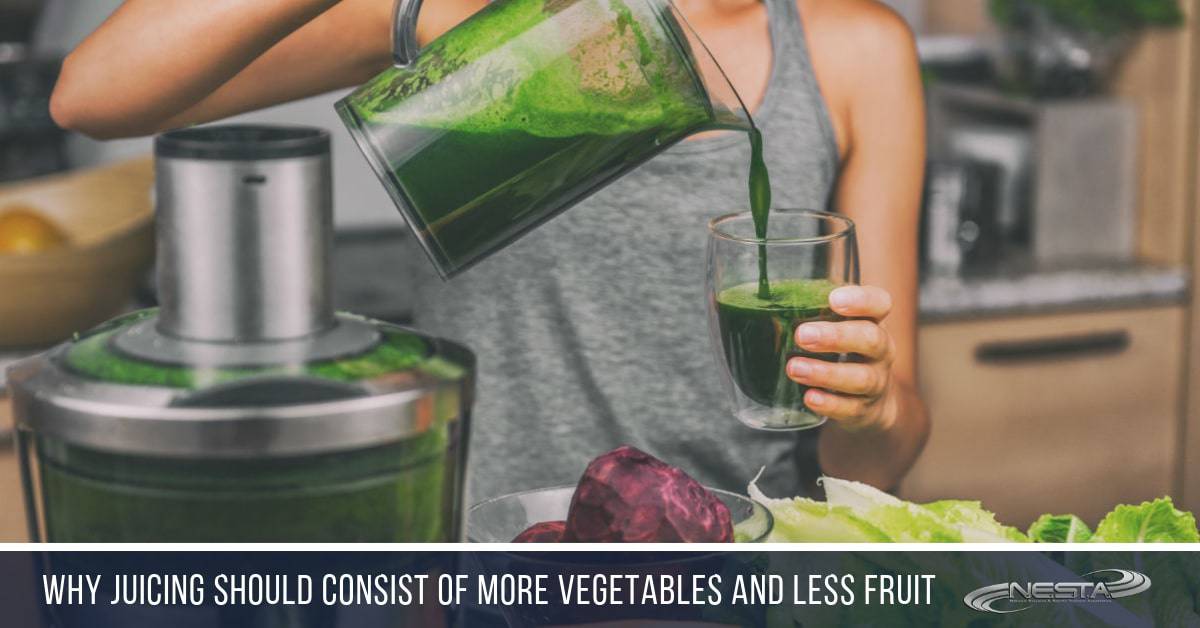 Your Mother always said, “Eat your vegetables.” You know that you should, but sometimes the things that are good for you just don’t taste good. Juicing may be the solution to eating your vegetables – by drinking them!
Your Mother always said, “Eat your vegetables.” You know that you should, but sometimes the things that are good for you just don’t taste good. Juicing may be the solution to eating your vegetables – by drinking them!
Juicing is an Effective way to Add More Vegetables to your Diet
When juicing, it’s important to juice more vegetables than fruits. While fruit juices may be sweeter and tastier, vegetable juice is healthier (and lower in calories) than fruit juice.
Not All Juices are Created Equal
What you put in your juice can make a big difference in taste and nutrition. Fruits are higher in sugar and calories than vegetables. Drinking juices made from fruit alone can lead to a spike in your blood sugar, especially if you are following a temporary juice diet. To reduce the sugar content, juice vegetables and then add a piece of fruit, like an apple or kiwi to make your juice recipe more palatable.
Be Selective in the Fruits You Add
While tropical fruits like mango and pineapple are tasty alone, you must use a considerable quantity to produce juice and it will be very high in sugar and calories. Fresh fruits (organic if available) offer plenty of vitamins, antioxidants, and beneficial enzymes, but they are best eaten whole with their fiber. Juicing with only fruit, especially if you are following a weight loss plan should be kept to a minimum. Fresh pineapple mango juice is sweet and delicious but contains the equivalent of eight teaspoons of sugar!
Fruit juices will send your blood sugar and insulin levels sky high and over time, lead to increased fat storage. The exception to the fruit juice rule is using the occasional green apple or kiwi to sweeten some of the more bitter green drinks. Green apples are relatively low in sugar.
Go Organic!
Choose organic, raw green vegetables for maximum nutrition in your freshly pressed juices. This is a great way to include more vegetables in your diet. Here are a few of the best veggies to juice:
- Cucumbers – 95% water and plenty of antioxidants including vitamin C and beta-carotene that fight free radicals and promote skin health.
- Carrots – The beta-carotene in carrots is an antioxidant that helps maintain healthy skin and plays a key role in eye health.
- Broccoli – Rich in vitamin K and vitamin E, antioxidants that protect cells from free radicals plus B vitamins and vitamin C that boost immunity.
- Celery – Celery contains vitamin K, vitamin A, vitamin C, folate, and potassium.
- Spinach – Spinach is an excellent source of vitamins A, C, and E, along with iron, calcium, potassium, protein, and choline which supports healthy brain function.
How You Can Help
If you want to help clients with food, diet, weight management and improving the results of their fitness routines, the Fitness Nutrition Coach course is for you. You will learn about optimal nutrition, including proven techniques for increasing energy, optimal health and decreased dependence on medications. Instantly increase your job and career opportunities with this popular professional credential.
You can become a Certified Personal Fitness Chef and expand your current personal chef business, or add a new profit center for your fitness or wellness business. Many personal chefs cook and coach people in groups to help more people and earn more money per hour. Some chefs provide weekly meal prep service for health-minded customers and athletes.
Check out what it takes to start a career in personal fitness training. This is your most affordable and fastest way to become a highly qualified personal trainer.
NESTA coaching programs are open to anyone with a desire to learn and help others. There are no prerequisites.
That’s it for now.
Take action!
PS: Click here to see many helpful business/career resources






